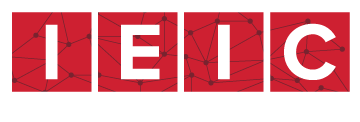Co-Authors: Clint Heiden, Founder IEIC & Vinay Nagpal, Executive Director, IEIC
The Covid-19 pandemic has exponentially increased the use of the Internet in our daily lives. It created an inorganic growth event that changed everything overnight and has accelerated our transition to a digital society. Our children, for the most part, are learning exclusively online. Professionals have mastered multiple video conferencing applications and attend conferences online. According to DE-CIX, the global Internet Exchange and interconnection platform, “Internet traffic is growing by an average of 20 percent, together with the demand for quality. While different regions are at different stages of development, depending on when the COVID-19 infections began to take off in their locality, the trend is valid from North America to Europe, to the Middle East, and on to the Indian sub-continent.”
This spike in internet usage caused by the pandemic is also a good time to ask ourselves if our Internet diversity is adequate enough to handle this sudden increase in data consumption, as well as whether it can handle such future spikes. Also, if Covid-19 has established a new floor for Internet usage, are we building enough infrastructure to keep pace with it?
Since most of us always want to be on the grid, our dependency on the underlying infrastructure that keeps the Internet “running” has become extremely critical. The Internet has helped us stay connected [with friends and family] and productive [by enabling us to work remotely]. It has also introduced students to remote learning.
If we had to thank one person for the robustness of the Internet, it would be Dr. Vint Cerf and his colleague, Dr. Robert E. Kahn, who co-designed the Internet’s architecture. Dr. Cerf is currently Google’s Chief Internet Evangelist and the Chairman of the Internet Ecosystem Innovation Committee of IEIC.
“Regardless of the absolute demand for Internet capacity, the world has become significantly dependent on reliable access to its resources for daily life. Resilient and rich connectivity has become a necessary design requirement to meet these now critical expectations”, said Dr. Vint Cerf.
The various websites we visit, the emails we send, the Netflix movies we watch, and the Zoom calls we make are all sending our data over thin (thinner than human hair) small tubes or fiber optic cables.
It was a fiber optic cable that took down the Department of Elections website in the Commonwealth of Virginia on October 13. The website was down for hours on the final day of voter registration. Sure enough, the deadline was extended by two days.
The outage of the fiber optic cable that caused the website to go down was reported on social media, which ironically enough also uses fiber optic cable to transmit data. It took nearly six hours for normalcy to be restored. The Virginia Information Technology Agency tweeted that the fiber cut happened near Route 10 in the Chester area, south of Richmond. The glitch also caused problems for people who had showed up for in-person absentee voting in some areas.
The Governor of Virginia, Ralph Northam, had this to say: “Most of the state’s Internet service was cut off after the cable in Chesterfield County was inadvertently severed during roadside work related to an ongoing utilities project near Route 10.”
Such incidents bring to light the crucial need for diversity — diversity to have diverse fiber optic cable connections for business, or to have diverse subsea cable landing points (close to shore). This in particular is important because cables that are installed underneath the roads (aka terrestrial fiber cables) do connect to the cables on the ocean bed (aka subsea fiber cables). The subsea cables enable us to gain access to and send data internationally and the terrestrial fiber cables do the same nationally.
As our dependency on the Internet is going to continue to increase in the times to come, the diversity and resiliency of the Internet will be even more important. The Internet Ecosystem Innovation Committee or IEIC is an independent committee that promotes Internet diversity forming new global Internet nexus points. Learn more about IEIC and the importance of Internet Diversity at: www.ieicco.com
